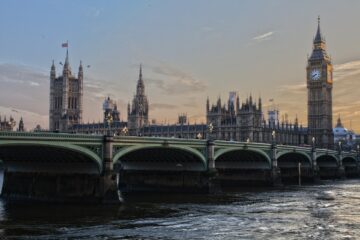![]()
- Introduction:
- Legal System in Ancient India
- The Legal system in Medieval India
- Judicial System under British Rule
- High Court in Making
- Jurisdiction of the High Courts
- Present Day Jurisdiction of the High Courts
- Appeals from High Court
- The Calcutta High Court
- The Bombay High Court
- The Madras High Court
- Federal Court
- Judicial System after Independence
- Conclusion
Introduction:
India has one of the oldest legal systems in the whole world. This system has evolved from time to time due to various political and economical reforms. One thing should be noted that certain English writers claimed in their publications that the growth of the legal aspect of our country only came after the British captured India. However, this fact is not true. This is a pure act of negligence and self-interest. They claimed so to uplift their own culture and strength while depressing the culture and civilization of ancient and medieval India.
The evolution of the Indian legal system can be divided into four parts:
- Law in Ancient India
- Law in Medieval India
- Judicial System under the British rule
- India after Independence
Legal System in Ancient India
The first evidence of the legal system came from the Vedas which was accumulated in Dharma Sastra. ‘Dharma’ means duty or principle of holiness. This contained various rights and duties of people of different castes, rights, and limitations of a king. There is an ample number of evidence which conclude that in ancient India, there was a legal system that consisted of a hierarchy of judicature, starting from the family court where usually a family person acted as an arbitrator, to judge in a higher court, to a ‘praadivivake’ or ‘adhyaksha’ (now called as a Chief Justice) and finally the court of the king.
There was also a system of negotiation (presently like the panchayat system) where the judges or the king has no right to interfere. There also lies a jury system, where a set of people (mostly people from the upper class) is used to assist the king in evaluating the disputes and passing the judgment. This system of the court was also present after independence, but later got abolished. [1]
The Legal system in Medieval India
During the 11th century, the Mitakshara School of Law was the most appropriate law, which became the base for Hindu laws in present times. However, after the 11th century, Muslims invaded India by defeating Prithvi raj, Chauhan. They established the Hanafi School of law which interpreted Islamic laws and administrations.
However, during the sultana period, there was a system of seven courts of law for various types of cases. During this time, the hierarchy of the judicial system was unstable and depended on the hands or discretions of the judge.[2]
Judicial System under British Rule
When the British came to India, they faced the legal system which was set up by the Mughals, which was very confusing for them. Therefore, they started reforming the legal system.
First, they divided the whole country into three provinces for their convenience i.e., Bengal, Madras, and Bombay. Each province was headed by a governor who worked under the governor general.
The new system of the law came in the year 1772, where they started establishing various courts of law such as the Supreme court, Sadar Nizamat Adalat, and Sadar Diwani Adalat.
The British government did not want Indians to work in these courts and pursue legal careers but the Indians were unstoppable. Many went to England for understanding the colonial system and came back to save their motherland as a ‘barrister’. Monomohun Ghose was the Indian to be a barrister and started practicing in the Calcutta High Court. And Cornelia Sorabji was the first female barrister of the country.
High Court in Making
Before the year 1861, under the British emperor, India had two judiciary systems for law administration and delivering justice. One of them was the Sadar Diwani Adalat[3] and other was the Sadar Nizamat Adalat. But this kind of judicial system often created conflicts and inconvenience in the process of rendering justice.
Finally, Sir John Charles Wood, the then secretary of the state introduced a bill and moved in the House of Commons to enact the ‘’Indian High court Act’’ on 6th June 1861. However, the act got passed by the British Government on 6th August 1861. The sole motive of the act was to establish High courts at Calcutta, Madras, and Bombay, the three imperial capitals of British India. The act consisted of 19 sections in total. [4]
The act itself empowered the High courts to use the great seal of the United Kingdom to issue a letters patent and also prohibited the Sadar Adalat and the Sadar Nizamat Adalat to act in the presidencies. Therefore, the records and documents of these courts were now under the jurisdiction of the newly formed High courts.
Structure
According to the “Indian High court Act, 1861”, the Hon’ble High Court was led by several judges headed by a Chief Justice. The act also stated that the High court should not appoint more than 15 judges. But if needed, it can only be done if her Majesty thinks so.[5]
Qualification
A person could be appointed as a judge of the Hon’ble High court if-
- A Barrister with more than five years of experience;
- A Person who served as a Zila or District judge for more than three years or a member of the covenanted Civil Service;
- A person who served as a pleader in Sadar court or High court for a minimum of 10 years;
- A judicial officer with 5 years of experience.[6]
It was also mentioned that one-third of the judges including the Chief justice should be a barrister and other one-third should be a member of covenanted Civil Service.
Jurisdiction of the High Courts
Letters Patent issued by her Majesty was the only factor which was liable for the jurisdiction of High Courts. If she feels fit, she could provide them the power to exercising jurisdiction with respect to the administration of justice within the presidency.
However, High Courts were provided with subsequent original and appellate jurisdiction.
Original Jurisdiction
The court had original jurisdiction in the following matters:
Civil Jurisdiction
The Original Civil Jurisdiction of the court was of two types: –
- Ordinary Civil Jurisdiction
- The Ordinary Civil Jurisdiction prolonged to the city of Calcutta, Madras, and Bombay and such nearby restrict as from time to time will be prescribed by the regulation of a capable legislature in British India. All suits which deal with a value of more than Rs. 100 and which were not cognizable by the small court at Calcutta, Madras, and Bombay were cognizable under High Courts. Further, the ordinary civil jurisdiction could be invoked only if:
- Any movable property that is present within the range of Calcutta, Madras, and Bombay;
- The cause of action which took place in Calcutta, Madras, and Bombay;
- The place for carrying out the business of the defendant is in Calcutta, Madras, and Bombay.
- Extra Ordinary Civil Jurisdiction: Under this jurisdiction, the High court can call out any case from any lower court and pass judgment on it.
Criminal Jurisdiction
It is of two types also:
- Ordinary Original Criminal Jurisdiction: Under this Jurisdiction, before the due course of law, the High Court was empowered to try all persons who have been brought.
- Extra Ordinary Original Criminal Jurisdiction: Under this jurisdiction, the High Court had the power to hear any criminal case from any lower court.
Revenue Jurisdiction
Under this jurisdiction, the High court had the power to hear any cases related to revenue. This jurisdiction was ruled out from the of the Supreme Court by the ‘Act of Settlement, 1781’.
Admiralty Jurisdiction
The jurisdiction with respect to maritime claims under the Bill will vest with the respective High Courts and will extend up to the territorial waters of their respective jurisdictions. The central government may extend the jurisdiction of these High Courts.
Testamentary and Miscellaneous Jurisdiction
The High Courts were given similar testamentary and miscellaneous jurisdiction which was earlier enjoyed by the Supreme Court only.
Appellate Jurisdiction
The High Court had two types of appellate jurisdiction:
- Civil Jurisdiction: Any civil case authorized by any law or regulation with the territory of India can be appealed to the High Court. [7]
- Criminal Jurisdiction: Any criminal case authorized by any law or regulation with the territory of India can be appealed to the High Court.
Present Day Jurisdiction of the High Courts
Presently, High Courts are the head of all the subordinate courts that are present within the respective state. High Courts of India has original, writ jurisdiction, appellate jurisdiction, and supervisory jurisdiction. In addition to this, the High Court also holds an advisory function that lets them advise the state government or governor of the state in various legal fields.
Appeals from High Court
A person could have appealed regarding a case where the amount involves is Rs. 10,000 or more, to the Privy Council if he or she is not satisfied with the judgment laid down by the High Court in civil and criminal cases from its original jurisdiction. However, it was only possible if the High Court certified that the case is fit for appeal.
The Calcutta High Court
The High Court of Judicature at Fort William (Currently known as The Calcutta High Court) came into effect on the 14th of May, 1862. It was established by the ‘Indian High Court’s Act, 1861’. The Calcutta High Court is the first High Court of India and Sir Barnes Peacock was the first Chief Justice of the Calcutta High Court.[8]
The Bombay High Court
The High Court of Bombay is one of the oldest High Courts in India. It has Original as well as Appellate Jurisdiction over the State of Maharashtra, Goa, Daman & Diu, and Dadra & Nagar Haveli. In addition to this, the High Court of Bombay also has benches at Aurangabad, Nagpur, Panaji (Goa).[9]
Recently, the court building became a part of ‘The Victorian and Art Deco Ensemble of Mumbai’[10], which was also added to the list of ‘World Heritage Sites’ in 2018.
The Madras High Court
The High Court of Madras was established on the Presidency Town of Madras (currently known as Tamil Nadu) by using Letters Patent granted by Her Majesty Queen Victoria, bearing date 26th June 1862. It exercises Original as well as Appellant Jurisdiction over the City of Madras and the complete State.[11]
Federal Court
Privy Council was the superior court for British India. But the cost of appealing to the Privy Council was quite expensive. Therefore, there was a need for Federal Court.
Thus, in 1935, the British Government passed the “Government of India Act” in which, section 200 stated to establish a Federal Court in India. Ultimately, on 1st October 1937, the Federal Court of India was established in Delhi.[12]
Judicial System after Independence
After winning the ‘swaraj’ from the hands of the British government after 190 long years, the first major step which changed the shape of the judicial system of the country is to remove the header of the Privy Council. Therefore, the Federal Court only existed for 12 years. After independence, “Abolishment of Privy Council Jurisdiction Act, 1949” was passed by the Indian government which eventually abolished the Federal Court as well as the Privy Council to work further and the Supreme Court of India became the apex court of the country under which all the High Courts, Session courts[13], Civil courts[14] , and Special Tribunal [15]courts were placed.
Conclusion
High Courts are one of the most important parts of the Indian legal system. It has a wide range of scope. They can issue writs as well as punish the wrongdoers.
Today, after 75 years of Independence, it has emerged as a big hassle for each judiciary and the common people as there lie over 3.5 crores cases pending throughout the country’s various courts. Around 59,867 cases are pending withinside the Supreme Court and 44.75 lakh cases in high courts. At the district and subordinate court levels, the quantity of pending cases stands at a stunning 3.14 crore.
References:
[1] Shivaraj S. Huchhanavar, The Legal System in Ancient India, Legal Service India.Com (Aug 18, 2021, 9:00AM) http://www.legalservicesindia.com/article/1391/The-Legal-system-in-ancient-India.html
[2] Shivaraj S. Huchhanavar, The Legal System in Ancient India, Legal Service India.Com (Aug 18, 2021, 9:00AM) http://www.legalservicesindia.com/article/1391/The-Legal-system-in-ancient-India.html
[3] Maren Goldberg, Sadar Diwani Adalat, Britannica
[4] School of Law, University of Kashmir, Establishment of the Indian High Court Act, 1861, Unit-5, 2 (2009), http://law.uok.edu.in/Files/5ce6c765-c013-446c-b6ac-b9de496f8751/Custom/UNIT-%205.pdf
[5] Supreme Court of India, Evolution of Judiciary, Supreme court of India (Aug 18, 2021, 9:30 AM) https://main.sci.gov.in/pdf/Museum/m2.pdf
[6] School of Law, University of Kashmir, Establishment of the Indian High Court Act, 1861, Unit-5, 2 (2009), http://law.uok.edu.in/Files/5ce6c765-c013-446c-b6ac-b9de496f8751/Custom/UNIT-%205.pdf
[7] School of Law, University of Kashmir, Establishment of the Indian High Court Act, 1861, Unit-5, 2 (2009), http://law.uok.edu.in/Files/5ce6c765-c013-446c-b6ac-b9de496f8751/Custom/UNIT-%205.pdf
[8] High Court of Calcutta, Brief History of the Calcutta High Court, Calcutta High Court (Aug 17, 2021, 10:00 AM) https://www.calcuttahighcourt.gov.in/page/History
[9] High Court of Bombay, Brief History of the Bombay High Court, Bombay High Court (Aug 17, 2021, 12:00 PM) https://bombayhighcourt.nic.in/history.php
[10] UNESCO, The Victorian and Art Deco Ensemble of Mumbai, UNESCO (Aug 18, 2021, 3:00) https://whc.unesco.org/en/list/1480/
[11] E-committee, Supreme Court of India, High Court of Madras, e-committee, Supreme Court of India (Aug 17, 2021, 1:00 PM) https://ecommitteesci.gov.in/division/high-court-of-madras/
[12] George H. Gadbois Jr, The Federal Court in India: 1937-1950, JSTOR (Aug 18, 2021, 7:00 AM) https://www.jstor.org/stable/43949806
[13] FE Knowledge Hub, what is Session Court? financial express (22nd Aug, 2021, 10:00AM) https://www.financialexpress.com/what-is/sessions-court-meaning/1782449/
[14] Abhishek Kumar, Indian Civil Court System, S&P (22nd Aug, 2021, 10:00 AM) https://singhania.in/blog/indian-civil-courts-system
[15] India Filling, Special Courts and Tribunals, India Filling (22nd Aug, 2021, 10:00AM) https://www.indiafilings.com/learn/special-courts-tribunals/



0 Comments